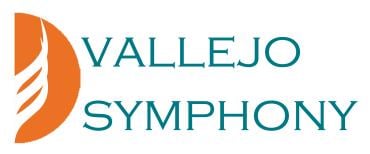Orchestra Librarian

DUTIES FOR LIBRARIAN
1. The Librarian, working with the Conductor, orders the music for the
concerts. Hopefully, it is borrowed/rented and with bowing markings.
Check with Conductor regarding pitfalls including pieces with more than
one version or vocal numbers available in different keys and which
edition is preferred.
2. Order the music 2 months before the concert. Check with local libraries
such as, Santa Rosa Symphony, Berkeley Symphony, San Francisco
Library, Educational Music Service (emsmusic.org) and Vallejo Symphony
Library. Be sure to check the VSO library to see if the parts are usable.
Another source is David Daniels’ Orchestral Music: A Source Book.
3. The music can be shipped to you. Have the source bill the office and let
the office know about the shipment. Be sure to count any set you rent,
buy, or borrow and make note of the count. Always check with the
symphony office to make sure the cost is in the budget.
4. Six week prior to the first rehearsal, mail out music to the string
principles. Mail them one original/concert part and one photocopied part.
Tell them they should mark their bowings into the photocopied part and
send them back to you. They should keep their original/concert part to
use for practice.
5. Four weeks prior to the first rehearsal, the first violin bowings are due
from the Concertmaster. Send a PDF scan of the Concertmaster’s part to
other principles and tell them they have two weeks to get their respective
bowing changes to you. Meanwhile, photocopy and mail out to all string
players with disclaimer that bowings may be changed at first rehearsal.
6. Three weeks prior to the first rehearsal, insert the concertmaster bowings into
the remaining first violin original/concert parts.
7. Two weeks prior to the first rehearsal - all other bowings are due from the
principal players. If the principle player has a LOT of bowing changes, they
will ask you to email a PDF of the bowing changes to their section (this rarely
happens, though. Most of the time they only have a few changes and the string
section can sight read and get used to at the first rehearsal).
8. The final two weeks up to the first rehearsal, insert all other bowings into the
original the remaining original/concert parts. Bring these parts to the first
rehearsal.
9. After the string rehearsal, make a single-sided set of copies of each string
principle part. These can be used to copy bowings into the performance
parts. Always return the original parts, rather than a set of practice parts
to the string principals.
10. For the first rehearsal, it is easier to make a full set of practice parts for
the winds, brass and timpani. Never mail an original wind, brass or
percussion part because it’s usually a unique part in the set and cannot
easily be replaced. You can keep them in case someone doesn’t have a
copy or didn’t bring a copy. Ask all the players to leave either their
practice parts or their performance parts on the stand after each
rehearsal. This way the librarian can always have a full set of parts in case
someone forgets theirs.
11. Stay in touch with the personnel manager as string parts may need to be
returned or extra copies sent. At the first rehearsal handout the parts and
work with the personnel manager in sorting out the music. Bring music to
each service including extra parts and practice masters. Put music that
was left back on the stands and supply extra scores if needed.
12. Ask everyone to leave the music on the stand so you can pick it up in
some kind of order. If original parts are used for performances and not
distributed as practice parts, then everything that has to be collected and
returned is onstage. Watch out for players who do not play the entire
concert, in case their stands get moved back stage during the
intermission. Be sure to save several programs to send back with rental
music. Most music rentals require that 3 copies of the program be
returned with the music.
13. Sort the parts and return the music. Make sure extra parts get integrated
with the ones that were used. Save a set of copied practice parts for future
use. Ship rental music back in a timely manner with a copy of the packing
slip and programs. Return sets from local sources. Deposit any newly
purchased music in the VSO library and update the database.
14. Your expenses will typically fall into four categories: copying, postage,
office supplies and shipping music back to publishers. The VSO office has
a “check request” form. They prefer you bill for expenses after every set,
along with your hours.
Benefits:
$600 per concert set (3 concerts per year)
Expenses for job purposes paid back to librarian three times per year
How to Apply:
Company:
Vallejo Symphony
Location:
71 A Marin Street
Vallejo , CA 94590
United States
Website Link:
Contact Email:
Work Schedule:
Part Time
Job Type:
Contract
Start Date:
Application Deadline:
